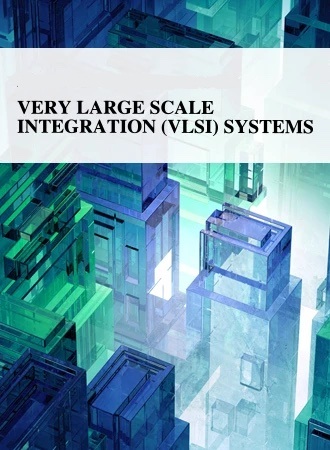
|
FreeComputerBooks.com
Links to Free Computer, Mathematics, Technical Books all over the World
|
|
- Title: Very Large Scale Integration (VLSI)
- Author(s) Zhongfeng Wang
- Publisher: IN-TECH; eBook (Creative Commons Licensed)
- License(s): Creative Commons License (CC)
- Paperback: 456 pages
- eBook: PDF and PDF Files
- Language: English
- ISBN-10: N/A
- ISBN-13: 978-953-307-049-0
- Share This:

|
This book is intended to cover a wide range of VLSI design topics. The book can be roughly partitioned into four parts. Part I is mainly focused on algorithmic level and architectural level VLSI design and optimization for image and video signal processing systems. Part II addresses VLSI design optimizations for cryptography and error correction coding. Part III discusses general SoC design techniques as well as other application-specific VLSI design optimizations. The last part will cover generic nano-scale circuit-level design techniques.
The process of Integrated Circuits (IC) started its era of VLSI (Very Large Scale Integration) in 1970's when thousands of transistors were integrated into one single chip. Nowadays we are able to integrate more than a billion transistors on a single chip. However, the term "VLSI" is still being used, though there was some effort to coin a new term ULSI (Ultra-Large Scale Integration) for fine distinctions many years ago.
About the Authors- N/A
- VLSI (Very Large Scale Integration)
- Electronics Circuit Design and Programming
- VHDL (VHSIC Hardware Description Language)
- Electronic and Computer Engineering

- Very Large Scale Integration (VLSI) by Zhongfeng Wang
- PDF Format
- Introduction to VLSI Design with System on Chip Design Reuse (Frank J. Ventura Jr.)
-
 Very Large Scale Integration (Kim Ho Yeap, et al.)
Very Large Scale Integration (Kim Ho Yeap, et al.)
In this book, a variety of topics related to Very-Large-Scale Integration (VLSI) is extensively discussed. The topics encompass the physics of VLSI transistors, the process of integrated chip design and fabrication and the applications of VLSI devices.
-
 VLSI Systems: A Logic, Circuit, and System Perspective
VLSI Systems: A Logic, Circuit, and System Perspective
This book addresses the need for teaching such a topic in terms of a logic, circuit, and system design perspective, builds an understanding of integrated circuits from the bottom up, paying much attention to logic circuit, layout, and system designs.
-
 Algorithms and Data Structures in VLSI Design
Algorithms and Data Structures in VLSI Design
This book presents broad and in-depth coverage of the entire field of modern VLSI Design with ordered binary decision diagrams (OBDDs), emphasizes its applications in computer aided circuit design.
-
 VLSI Design (Esteban Tlelo-Cuautle, et al)
VLSI Design (Esteban Tlelo-Cuautle, et al)
This book provides some recent advances in design nanometer VLSI chips, ranging from design tools, new post-silicon devices, GPU-based parallel computing, emerging 3D integration, and antenna design.
-
 VLSI Design: Practical Guide for FPGA and ASIC Implementations
VLSI Design: Practical Guide for FPGA and ASIC Implementations
This book provides insight into the practical design of VLSI circuits, includes key concepts in CMOS digital design, design of DSP and communication blocks on FPGAs, ASIC front end and physical design, and analog and mixed signal design.
-
 CMOS VLSI Design A Circuits And Systems Perspective
CMOS VLSI Design A Circuits And Systems Perspective
The extensively book details modern techniques for the design of complex and high performance CMOS Systems-on-Chip. The authors draw upon extensive industry and classroom experience to explain modern practices of chip design.
-
 Computer Aids For VLSI Design (Steven M. Rubin)
Computer Aids For VLSI Design (Steven M. Rubin)
This textbook broadly examines the software required to design electronic circuitry, including integrated circuits. Topics include synthesis and analysis tools, graphics and user interface, memory representation, and more.
-
 Digital Design with RTL Design, VHDL, and Verilog (Frank Vahid)
Digital Design with RTL Design, VHDL, and Verilog (Frank Vahid)
Offering a modern, updated approach to digital design, this book reviews basic design fundamentals before diving into specific details of design optimization. Starts with the low-levels of design, then progresses to the key uses of digital design today.
-
 Application-Specific Integrated Circuits (Michael J. Smith)
Application-Specific Integrated Circuits (Michael J. Smith)
This comprehensive book on application-specific integrated circuits (ASICs) describes the latest methods in VLSI-systems design. The book covers both semicustom and programmable ASIC types.
-
 Designing Analog Chips (Hans Camenzind)
Designing Analog Chips (Hans Camenzind)
A comprehensive introduction to CMOS and bipolar analog IC design. The book presumes no prior knowledge of linear design, making it comprehensible to engineers with a non-analog background.
-
 Free Range VHDL: The No-frills Guide to Writing Powerful Code
Free Range VHDL: The No-frills Guide to Writing Powerful Code
The purpose of this book is to provide students and young engineers with a guide to help them develop the skills necessary to be able to use VHDL for introductory and intermediate level digital design.
-
 Verilog Tutorials (Deepark Kumar Tala, et al)
Verilog Tutorials (Deepark Kumar Tala, et al)
Comprehensive and self contained, these tutorials cover the design of a plethora of combinational and sequential logic circuits using conventional logic design and Verilog HDL. Number systems and number representations are presented.
-
 Verilog Beginner's Tutorial (Dan Gisselquist)
Verilog Beginner's Tutorial (Dan Gisselquist)
This beginners Verilog tutorial attempts to fill some of the missing pieces in other tutorials. The goal is to take a beginner from knowing C and a little C++, all the way to a serial port example using both receiver, transmitter and FIFO.
-
 What's a Microcontroller? (Andy Lindsay)
What's a Microcontroller? (Andy Lindsay)
The book answers the question "What's a Microcontroller?" by showing students how they can design their own customized, intelligent inventions using the BASIC Stamp. This text is designed to accommodate a wide range of ages and skill levels.





